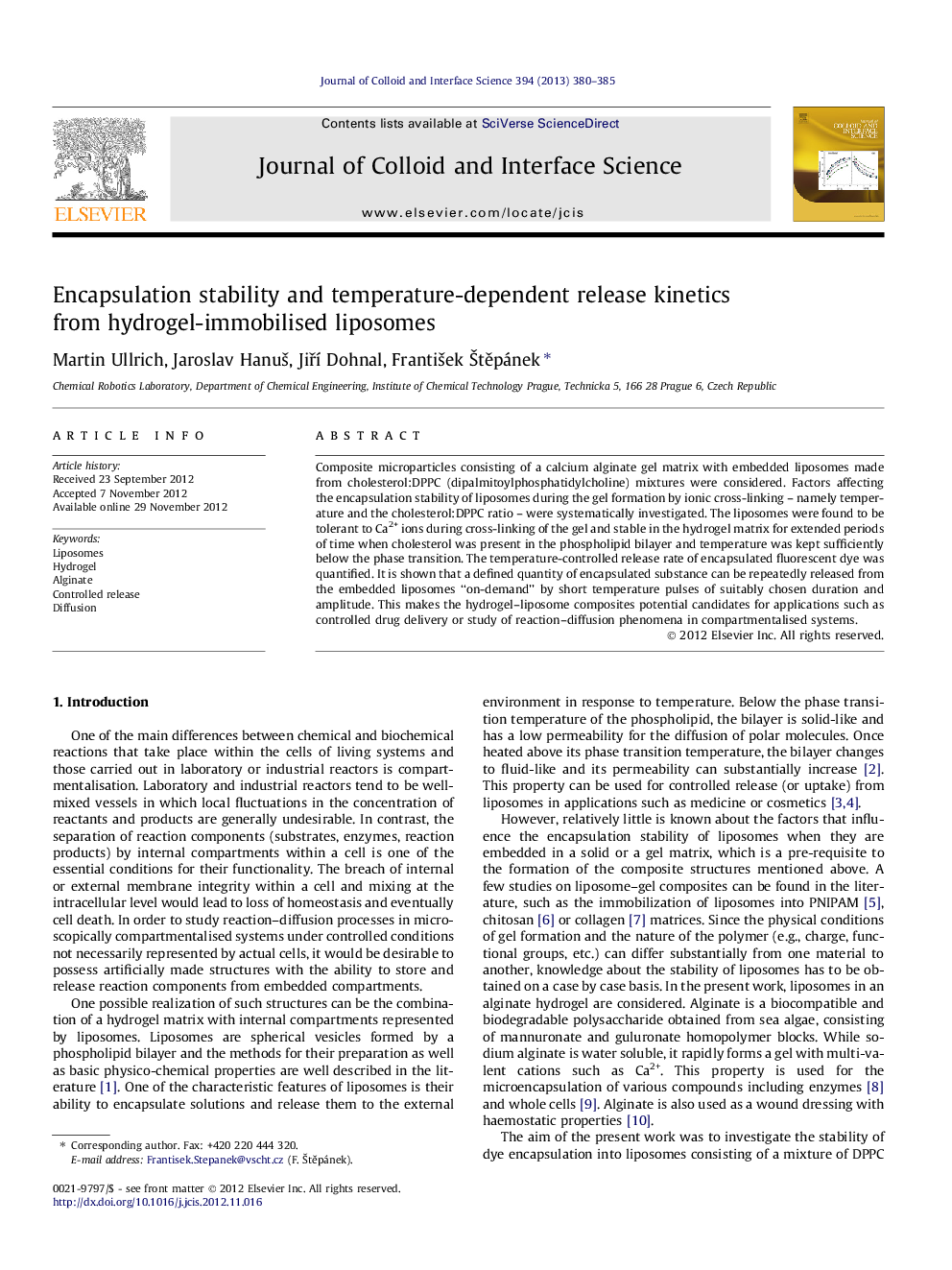| Article ID | Journal | Published Year | Pages | File Type |
|---|---|---|---|---|
| 607784 | Journal of Colloid and Interface Science | 2013 | 6 Pages |
Composite microparticles consisting of a calcium alginate gel matrix with embedded liposomes made from cholesterol:DPPC (dipalmitoylphosphatidylcholine) mixtures were considered. Factors affecting the encapsulation stability of liposomes during the gel formation by ionic cross-linking – namely temperature and the cholesterol:DPPC ratio – were systematically investigated. The liposomes were found to be tolerant to Ca2+ ions during cross-linking of the gel and stable in the hydrogel matrix for extended periods of time when cholesterol was present in the phospholipid bilayer and temperature was kept sufficiently below the phase transition. The temperature-controlled release rate of encapsulated fluorescent dye was quantified. It is shown that a defined quantity of encapsulated substance can be repeatedly released from the embedded liposomes “on-demand” by short temperature pulses of suitably chosen duration and amplitude. This makes the hydrogel–liposome composites potential candidates for applications such as controlled drug delivery or study of reaction–diffusion phenomena in compartmentalised systems.
Graphical abstractFigure optionsDownload full-size imageDownload high-quality image (137 K)Download as PowerPoint slideHighlights► Novel composite alginate–liposome hydrogel prepared. ► Influence of temperature, lipid:cholesterol ratio and osmolarity on stability investigated. ► Temperature-dependent release kinetics measured. ► “On–Off” controlled release demonstrated.
